Regular and Irregular Verbs
Verbs are essential parts of speech that describe actions, events, or states. They can be categorized into two main groups: regular verbs and irregular verbs.
Regular Verbs
Regular verbs follow a predictable pattern when conjugated in different tenses. They form their past tense and past participle by adding -ed to the base form of the verb.
Examples of Regular Verbs:
- Base Form: talk
- Past Tense: talked
- Past Participle: talked
Irregular Verbs
Irregular verbs do not follow the standard -ed pattern when conjugated. Instead, they have unique forms for their past tense and past participle.
Examples of Irregular Verbs:
- Base Form: go
- Past Tense: went
- Past Participle: gone
Study Guide
Here are some tips for understanding regular and irregular verbs:
- Regular verbs follow a consistent pattern for forming their past tense and past participle.
- Irregular verbs have unique past tense and past participle forms that must be memorized.
- Practice identifying and using regular and irregular verbs in sentences to reinforce your understanding.
- Use verb conjugation charts and exercises to familiarize yourself with the different forms of regular and irregular verbs.
[Regular And Irregular Verbs] Related Worksheets and Study Guides:
.◂English Language Arts Worksheets and Study Guides Eighth Grade. Regular and Irregular Verbs
Study Guide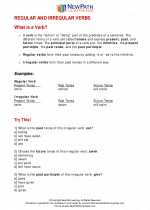 Regular and Irregular Verbs
Regular and Irregular Verbs  Activity Lesson
Activity Lesson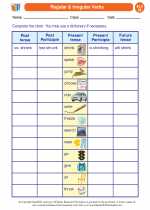 Regular & Irregular Verbs
Regular & Irregular Verbs  Worksheet/Answer key
Worksheet/Answer key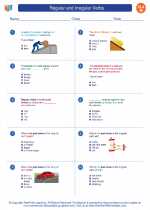 Regular and Irregular Verbs
Regular and Irregular Verbs  Worksheet/Answer key
Worksheet/Answer key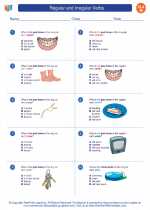 Regular and Irregular Verbs
Regular and Irregular Verbs  Worksheet/Answer key
Worksheet/Answer key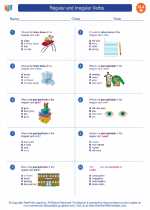 Regular and Irregular Verbs
Regular and Irregular Verbs  Worksheet/Answer key
Worksheet/Answer key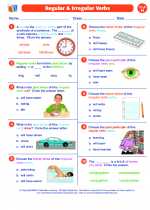 Regular and Irregular Verbs
Regular and Irregular Verbs 

 Activity Lesson
Activity Lesson
 Worksheet/Answer key
Worksheet/Answer key
 Worksheet/Answer key
Worksheet/Answer key
 Worksheet/Answer key
Worksheet/Answer key
 Worksheet/Answer key
Worksheet/Answer key

The resources above cover the following skills:
Language Standards
Conventions of Standard English
Demonstrate command of the conventions of Standard English grammar and usage when writing or speaking. [L.8.1]
Form and use verbs in the active and passive voice. [L.8.1b]